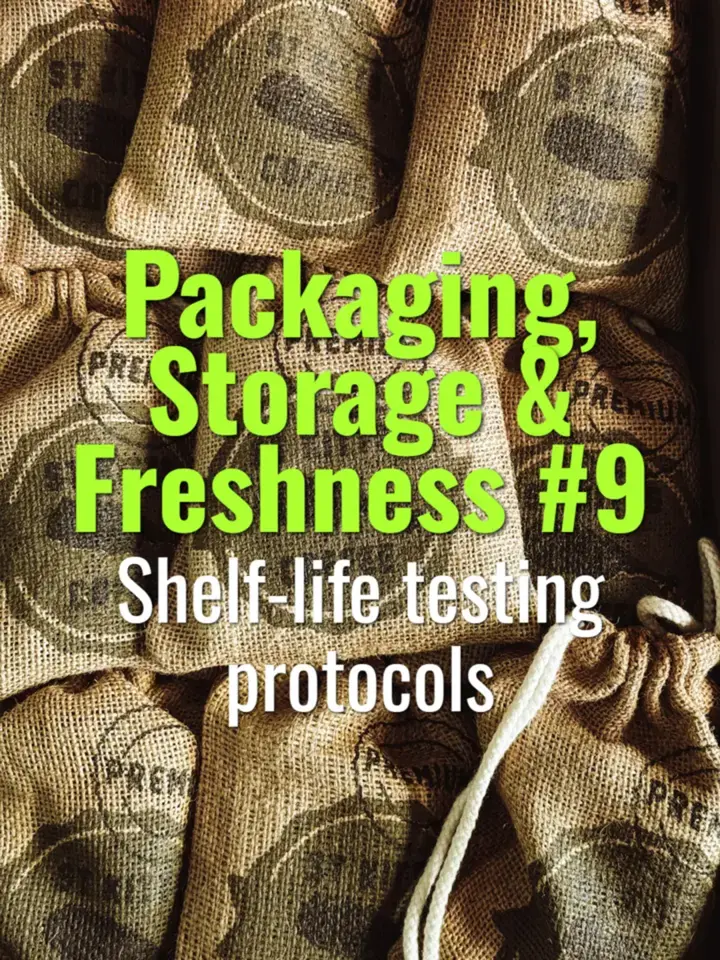Shelf-life testing protocols
How roasters and researchers establish shelf-life testing protocols to evaluate roasted coffee freshness, flavor retention, and packaging performance.
- Coffee Basics Nerds
- 1 min read
Article 9 of 12 in Packaging, Storage & Freshness/

Why Shelf-Life Testing Matters
- Coffee is highly perishable once roasted.
- Shelf-life testing ensures that packaging, storage, and distribution methods maintain flavor quality until consumption.
- Helps determine realistic best-before dates for consumers.
Key Variables to Monitor
- Chemical Indicators:
- Lipid oxidation (rancidity).
- Chlorogenic acid breakdown.
- CO₂ degassing rate.
- Physical Indicators:
- Moisture content.
- Water activity (a-w).
- Bag integrity and valve function.
- Sensory Indicators:
- Cupping at regular intervals.
- Tracking aroma, acidity, sweetness, body, and aftertaste.
Testing Protocols
- Controlled Storage Conditions:
- Compare ambient vs refrigerated vs frozen storage.
- Evaluate oxygen/light-exposed samples vs sealed.
- Time Intervals:
- Typical checkpoints: 1, 2, 4, 8, 12 weeks post-roast.
- Blind Cuppings:
- Panelists evaluate samples without knowing age/condition.
- Instrumental Analysis:
- Gas chromatography for volatile aromatics.
- Oxygen meter for packaging atmosphere.
Establishing Shelf Life
- Shelf life defined as the point where sensory quality drops below acceptable threshold.
- Specialty coffee often considered best within 4–6 weeks, though effective packaging can extend further.
Practical Applications
- Roasters refine packaging choices (valves, MAP, absorbers).
- Data supports transparent labeling and customer trust.
- Enables differentiation between peak flavor window and usable shelf life.
Summary
Shelf-life testing protocols combine chemical, physical, and sensory evaluation to determine how long roasted coffee retains desirable quality. These tests guide roasters in packaging, labeling, and storage strategies to deliver consistently fresh coffee to consumers.
You might also like:
- Tags:
- Specialty Coffee
- Shelf Life
- Matters Coffee
- Moisture Content
- Water Activity
- Roasted Coffee
- Acidity Sweetness
- Sweetness Body
- Sensory Evaluation
- Post Roast
- Storage Conditions
- Practical Applications
- Customer Trust
- Key Variables
- Lipid Oxidation
- Flavor Quality
- Body Aftertaste
- Volatile Aromatics
- Physical Sensory